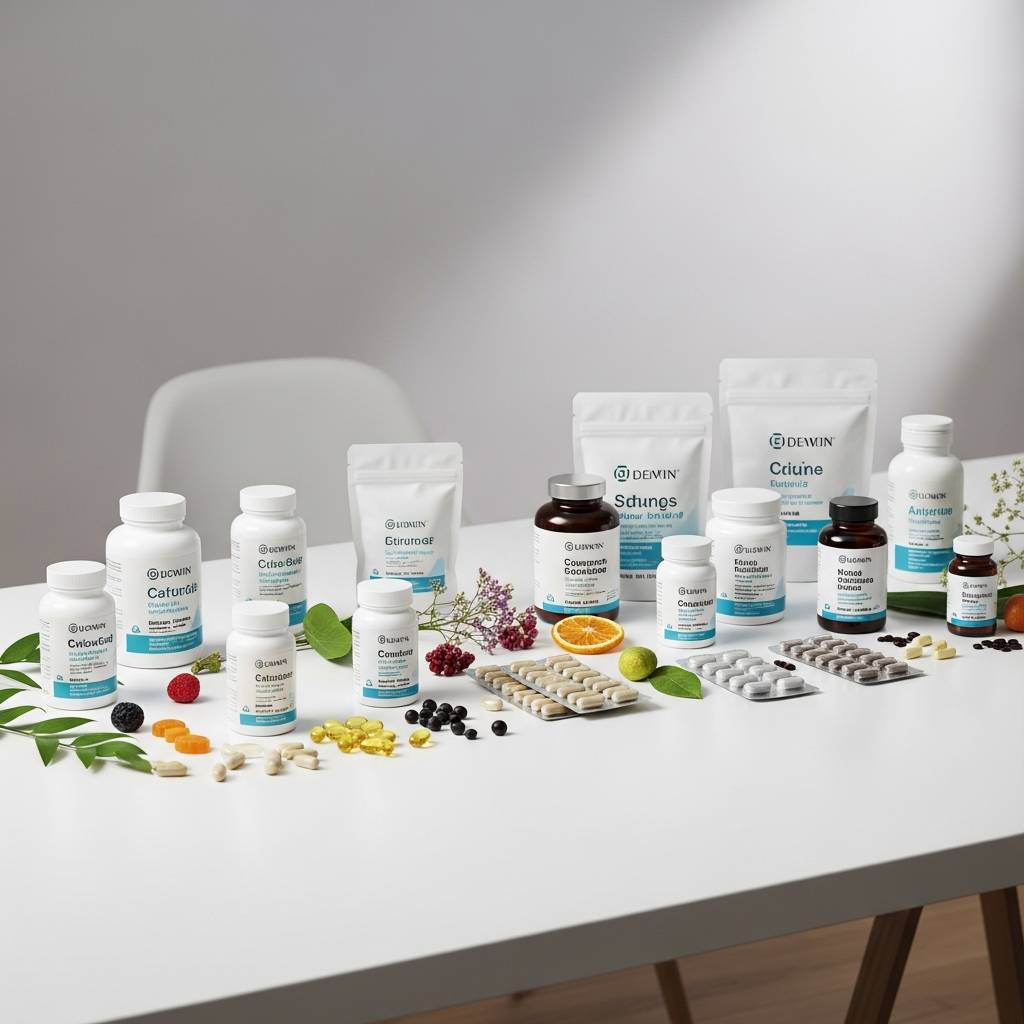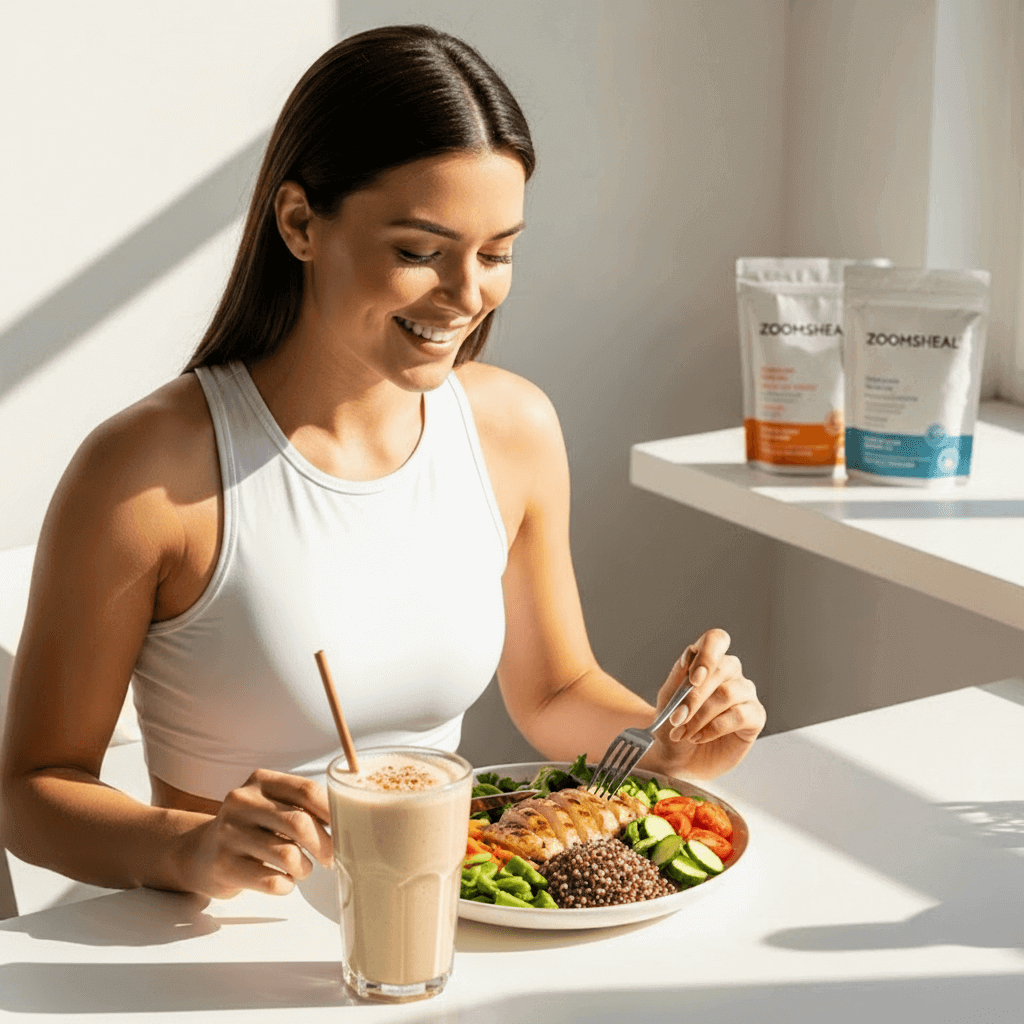The journey of a nutritional supplement from a fleeting idea to a consumer's cabinet is an intricate dance between scientific discovery, rigorous research, and meticulous manufacturing precision. In an industry burgeoning with new health trends, driven by an ever-more discerning consumer base, and under the watchful eye of increasingly stringent regulatory bodies, a haphazard approach to product development is no longer merely inefficient; it's a direct path to failure. True success in supplement development hinges on a deeply scientific and systematic approach, moving well beyond guesswork to ensure uncompromised safety, verified efficacy, and, ultimately, enduring consumer trust.
At its core,supplement innovation begins with identifying a genuine market need or an unmet consumer demand.This foundational step is far more involved than simply spotting a trending ingredient on social media or reacting to a competitor’s latest launch. It necessitatescomprehensive market researchthat blends robust data analysis with insightful foresight. Companies must meticulously track evolving consumer behaviors and health concerns, diving deep into market reports, conducting large-scale consumer surveys, and leveraging advanced social listening tools to identify emerging wellness priorities—be it immunity support in a post-pandemic world, specialized sleep aids for stressed urbanites, or targeted solutions for aging populations focusing on joint health and cognitive function. Simultaneously, a continuous scan ofscientific literatureis paramount, staying abreast of the latest breakthroughs in nutritional science, the discovery of novel bioactive compounds, and new evidence supporting the efficacy of existing ingredients. An equally critical component is a thoroughcompetitive analysis, which involves not just observing existing products but deconstructing their formulations, scrutinizing their claims, analyzing their pricing strategies, and understanding their market positioning to pinpoint true white space or areas where existing solutions fall short. Furthermore, proactiveregulatory landscape scansare essential to anticipate potential changes that might open new avenues for innovation or, conversely, restrict the use of certain ingredients or claims. This initial, inquisitive phase, blending scientific curiosity with astute market intelligence, sets the undeniable stage for what ultimately becomes a commercially viable and scientifically sound product.
Once a promising opportunity or unmet need is identified, the real scientific heavy lifting begins withformulation design.This isn't merely about compiling a list of ingredients; it's a complex scientific endeavor, an art backed by deep understanding of biochemistry, pharmacology, and material science. Every ingredient selected must possess a robustscientific rationale, supported by compelling evidence regarding its purported health benefits and a clear understanding of itsmechanism of actionwithin the human body. The sophisticated interplay of ingredients, known assynergy, is a critical consideration; strategically combining compounds that amplify each other's effects or address multiple facets of a health concern can lead to superior outcomes. For instance, magnesium and calcium are often paired, but their precise ratios and forms are critical for optimal absorption and to avoid competitive inhibition. A paramount challenge during this phase isbioavailability– how effectively and efficiently an active ingredient gets absorbed from the digestive tract and utilized by the body. Here, innovation truly shines, leading to the deliberate selection of specific ingredient forms (e.g., highly absorbable mineral chelates, specialized forms of vitamins like methylcobalamin for B12), and the exploration of advancedformulation techniquessuch as liposomal encapsulation for fat-soluble vitamins or co-administration with bioavailability enhancers like piperine. Every decision, from the precise chemical form of a vitamin to the specific extraction method of a botanical, directly influences the product's ultimate efficacy. Beyond effectiveness,safety is a non-negotiable cornerstone. Each ingredient must undergo thorough evaluation for potential side effects, contraindications, and interactions with other nutrients or medications. Establishing safe and effective dosage ranges is a meticulous process, strictly guided by clinical trial data, established Recommended Dietary Allowances (RDAs), Tolerable Upper Intake Levels (ULs), and prevailing scientific consensus, always keeping in mind the specific target demographic. Finally,product stabilityis meticulously assessed through rigorous real-time and accelerated studies, ensuring the formulated product maintains its potency, purity, and physical characteristics (e.g., appearance, dissolution) throughout its declared shelf life under recommended storage conditions, accounting for factors like moisture sensitivity, light exposure, and potential microbial growth. This includes comprehensive compatibility studies to prevent unwanted chemical reactions between ingredients. The careful selection ofexcipients– the non-active ingredients like fillers, binders, disintegrants, and coatings – is also crucial, ensuring they are safe, inert, and contribute positively to the product's stability, dissolution, and manufacturability without compromising active ingredient integrity. For products like chewable tablets, gummies, or liquid formulations, optimizingpalatability and sensory attributes(flavor, texture, aroma) is essential to enhance consumer acceptance and ensure consistent compliance, often employing natural flavors and sweeteners.
The very nature of the supplement, combined with consumer preferences, dictates itsdosage form,a pivotal decision point that profoundly impacts convenience, compliance, and ultimately, efficacy. Whiletraditional dosage formslike tablets and capsules remain mainstays due to their cost-effectiveness, versatility, and ease of production, they come with specific considerations. Tablets, for instance, can be designed for various release profiles (immediate, sustained, enteric-coated) but require careful selection of binders and disintegrants for optimal dissolution. Capsules offer excellent protection for sensitive ingredients and can effectively mask unpleasant tastes, accommodating powders, granules, or even semi-solids. Powders provide flexibility for customizable dosing and are easily mixed into liquids, though taste masking and preventing caking can be challenges. Beyond these, the industry is continually innovating withadvanced and consumer-friendly dosage forms.Softgelsare ideal for encapsulating oils and fat-soluble vitamins, ensuring good bioavailability and often a visually appealing presentation.Gummies, incredibly popular, offer a palatable and convenient alternative, especially for children or those with difficulty swallowing pills, though their formulation demands stringent control over sugar content and the stability of active ingredients within the gummy matrix.Chewable tabletsshare similar advantages but require careful engineering of texture and disintegration properties.Orally dissolving strips or filmsoffer rapid dissolution and absorption directly in the mouth, potentially improving bioavailability by bypassing first-pass metabolism, along with unmatched convenience.Liquids and dropsallow for precise, adjustable dosing and are suitable for a wide range of consumers, but present challenges in terms of stability and maintaining palatability over time.Effervescent tablets or powders, which dissolve in water to create a fizzy drink, provide rapid absorption and a pleasant delivery method, though their formulation requires precise control of the effervescent system. Furthermore,sustained- or extended-release formulationsare engineered to deliver active ingredients gradually over a prolonged period, which can significantly improve compliance and potentially reduce side effects by maintaining more consistent blood levels; this is achieved through specialized coatings or complex matrix systems. Each dosage form presents its own set ofmanufacturing complexities and cost implications, requiring specialized equipment and precise process controls. The ultimate selection is a strategic decision, weighing target population needs, ingredient characteristics, bioavailability goals, consumer preferences, and manufacturing feasibility.
Translating a meticulously designed formulation from a small lab-bench batch to large-scale commercial production demands rigorousmanufacturing process development and meticulous scale-up.This involves definingCritical Process Parameters (CPPs)– those precise variables in the manufacturing process, such as mixing duration, temperature control, or tablet compression force, that can directly impact the quality, uniformity, and stability of the final product. Robustprocess controlsare then implemented, utilizing sophisticated monitoring systems and automation to ensure these CPPs are consistently maintained within defined, validated limits. Every step is documented in comprehensiveStandard Operating Procedures (SOPs)to ensure absolute reproducibility across all batches, regardless of scale. This phase also necessitates the carefulselection of appropriate manufacturing equipment, ranging from industrial blenders and granulators to high-speed tablet presses, capsule filling machines, and automated packaging lines, all chosen based on the dosage form, desired batch size, and specific process requirements. Crucially, all equipment undergoes rigorousQualification (IQ, OQ, PQ): Installation Qualification (IQ) verifies correct installation, Operational Qualification (OQ) confirms the equipment operates as intended within specified ranges, and Performance Qualification (PQ) demonstrates its consistent performance under routine production conditions. The transition from small laboratory-scale batches to pilot-scale and then to full commercial-scale production is a delicate and iterative process known asscale-up studies. During this phase, every parameter is carefully monitored and fine-tuned to ensure consistent quality, yield, and efficiency at larger volumes. Furthermore,cleaning validationprotocols are developed and strictly adhered to, preventing any cross-contamination between different products or batches, a critical aspect of GMP compliance. Finally,process validation—either prospective (before routine production) or concurrent (during initial commercial batches)—provides the documented, scientific evidence that the entire manufacturing process consistently produces a product meeting all pre-determined quality specifications, time after time.
Throughout this entire product lifecycle,regulatory compliance is not a static checkpoint but a dynamic, ongoing requirement, deeply integrated into every stage of innovation.It commences in the earliest research and development phases withearly-stage regulatory assessments, which involve confirming that all planned ingredients are permitted for use in supplements within each target market, a landscape that varies significantly across regions (e.g., the Novel Food regulations in the EU for ingredients lacking a history of consumption). Simultaneously, a comprehensiveclaims substantiation strategyis developed, meticulously planning how intended health or nutrition claims will be scientifically validated to meet the stringent requirements of different regulatory bodies. As the formulation solidifies,formulation and labeling compliancebecome paramount, ensuring adherence to specific dosage limits for nutrients and other ingredients, and developing packaging labels that include all mandatory information—ingredient lists, nutrition facts, warnings, allergen declarations—in the required languages and formats for each market. Every claim made on labels and marketing materials must be truthful, not misleading, and fully compliant with local regulations, requiring continuous vigilance.Manufacturing and Quality Control (QC) complianceare non-negotiable: manufacturing facilities and processes must consistently meet the required Good Manufacturing Practice (GMP) standards of all relevant target markets. This entails establishing robustQuality Control procedures, encompassing comprehensive testing protocols for raw materials upon receipt, in-process samples at various stages of production, and exhaustive testing of finished products before release. Maintainingthorough documentation—accurate and complete records of every aspect of product development, manufacturing, and quality control—is not just a regulatory mandate but a cornerstone of traceability and quality assurance. Even after a product is launched,post-market surveillanceis critical, involving the establishment of efficient systems for monitoring product safety, diligently tracking any reported adverse events or consumer complaints, and promptly complying with mandatory reporting requirements to relevant health authorities (e.g., FDA, Health Canada, TGA). Furthermore, clearly definedproduct recall proceduresmust be in place, ready to be activated swiftly and effectively if necessary.
Ultimately,innovation in the nutritional supplement industry is a continuous, iterative cycledriven by a relentless pursuit of efficacy, safety, and consumer satisfaction. It means constantly pushing the boundaries by exploringnovel botanicals, nutraceuticals, and bioactive compounds, backed by emerging scientific evidence. It involvesdeveloping proprietary formulationsand unique processing methods that offer enhanced benefits or a distinct competitive advantage.Innovation in delivery systemsis also crucial, seeking to improve bioavailability and absorption through advanced technologies like specialized liposomes or microencapsulation (where regulatory compliant), while also enhancing convenience and compliance through user-friendly dosage forms. Beyond product-centric innovation,sustainable and ethical innovationis gaining immense traction, focusing on sourcing ingredients that are environmentally responsible and ethically produced, developing eco-friendly packaging solutions (recyclable, biodegradable, or reduced-material), and implementing greener manufacturing practices to reduce energy consumption and waste. Looking towards the future,personalized nutritionrepresents a significant frontier, with innovations aimed at developing supplements precisely tailored to individual needs based on genetic profiles, microbiome analysis, or real-time lifestyle data gathered from wearables. This relies heavily on integrating advanced technologies likeArtificial Intelligence (AI)for predictive analytics in formulation and market trend forecasting,Internet of Things (IoT)sensors for real-time monitoring of manufacturing environments, andblockchain technologyfor unparalleled supply chain transparency and anti-counterfeiting measures.
The journey from a scientific concept to a successful supplement on the shelf is indeed complex, but it is this very complexity, when navigated with precision and scientific rigor, that yields truly transformative products. By embracing a science-driven approach, coupled with an unwavering commitment to continuous innovation, brands can create high-quality, efficacious, and safe nutritional supplements that not only resonate deeply with consumers but also build enduring trust and solidify their position as leaders in the dynamic global wellness landscape. This meticulous, scientific process is not just a pathway to successful product launches; it is the fundamental architecture for building a reputable and sustainable brand, ultimately contributing to the health and well-being of consumers worldwide.
Zhongci Health:Your Partner in Scientific Supplement Development
At Zhongci Health, our core philosophy is rooted in the rigorous application of science and a relentless drive for innovation in nutritional supplement development. Our experienced team, comprising seasoned scientists, formulation experts, and dedicated regulatory specialists, collaborates seamlessly with brands like yours to transform visionary concepts into market-leading products. We excel in evidence-based ingredient selection, pioneering advanced bioavailability techniques, and executing precision manufacturing across a diverse range of dosage forms. Every step is underpinned by our deep understanding of global regulatory landscapes, ensuring your product is not only effective and safe but also fully compliant wherever it's sold. Partner with Zhongci Health to leverage our unparalleled scientific expertise and innovative spirit, creating supplements that are truly differentiated and positioned for enduring success in today's competitive and evolving market. Contact us today to explore how our scientific approach can bring your next breakthrough supplement idea to life.






